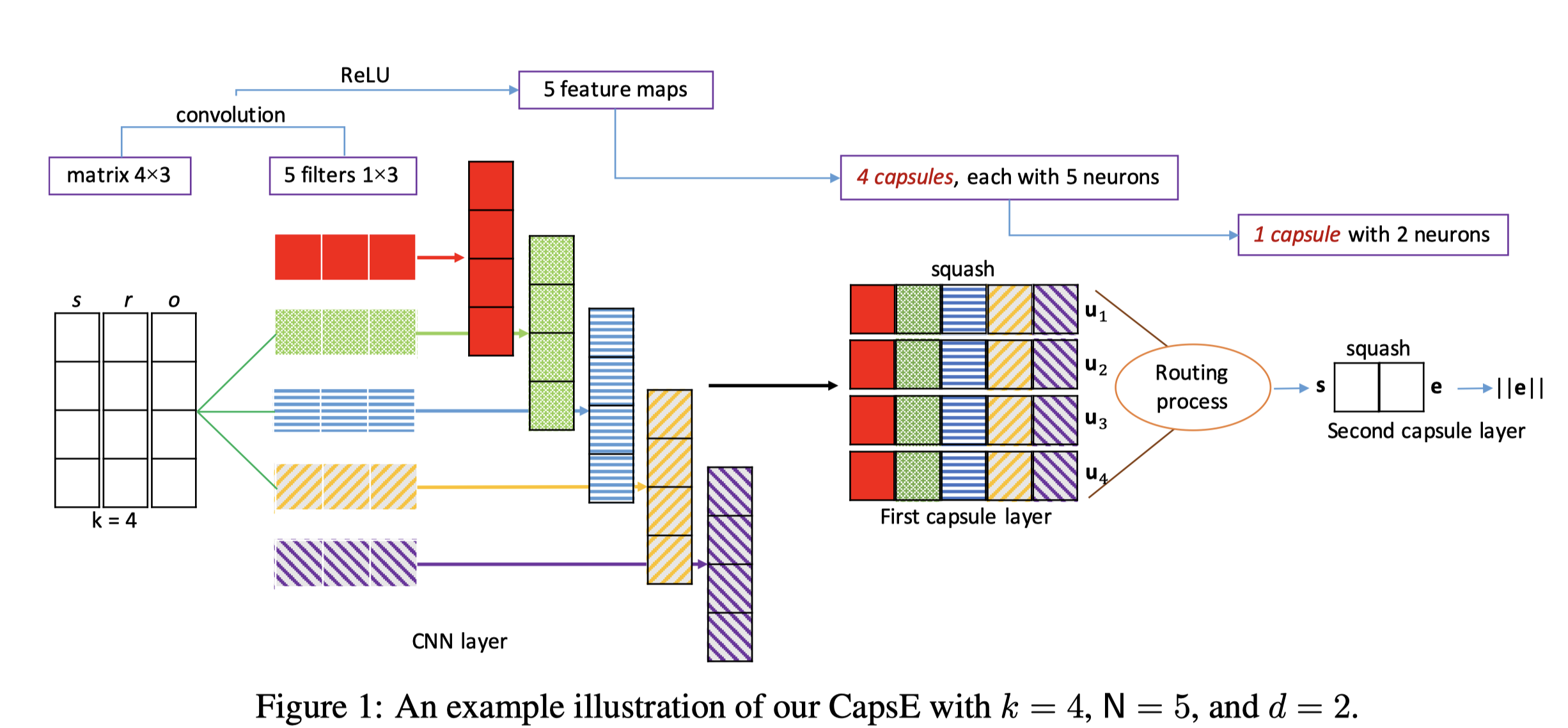CapsE
A Capsule Network-based Embedding Model for Knowledge Graph Completion and Search Personalization
2019-6-2s
1 Introduction
常用的KE模型,比如TransE,Complex,DISTMULT等模型,它们只捕获了三元实体之间的线性联系,没有捕获非线性的联系。
本论文的基础是在capsule networks(CapsNet)Dynamic routing between capsules的基础上,直接应用到knowledge graph triplet上。CPasNet原来是作用于图片上。
论文的理论是处在相同维度下的triplet,同一纬度下的embedding可以通过capsule(each capsule is a group of neurons) network捕获不同的变体。
2 The proposed CapsE

特点:
- 三元组直接作为一个矩阵进行训练
- 最后的score function是向量的长度
具体请看论文描述
3 Knowledge graph completion evaluation
数据集:
- WN18RR
- FB15k-237
评估指标:
- Mean rank(MR)
- Mean reciprocal rank (MRR)
- Hits@10
Embedding 初始化:
- ConvKB和CapsE都使用了TransE训练好之后的embedding来初始化
- 对于TransE,在WN18RR数据集下,使用了100-dimensional Glove word embeddings初始化
参数设置:
- 初始的KE维度为100
- 过滤器filter数量的设置在{50,100, 200, 400}
关于关系r的分类:
Following Bordes et al. (2013), for each relation r in FB15k-237, we calculate the averaged number \(\eta_s\) of head entities per tail entity and the averaged number \(\eta_o\) of tail entities per head entity. If \(\eta_s\) <1.5 and \(\eta_o\) <1.5, r is categorized one-to-one (1-1). If \(\eta_s\) <1.5 and \(\eta_o\) ≥ 1.5, r is categorized one-to-many (1-M). If \(\eta_s\) ≥ 1.5 and \(\eta_o\) <1.5, r is categorized many-to-one (M-1). If \(\eta_s\) ≥ 1.5 and \(\eta_o\) ≥ 1.5, r is categorized many-to-many (M-M)
最后得到的结果显示M-M的关系总是最多的
使用filtered设置进行训练